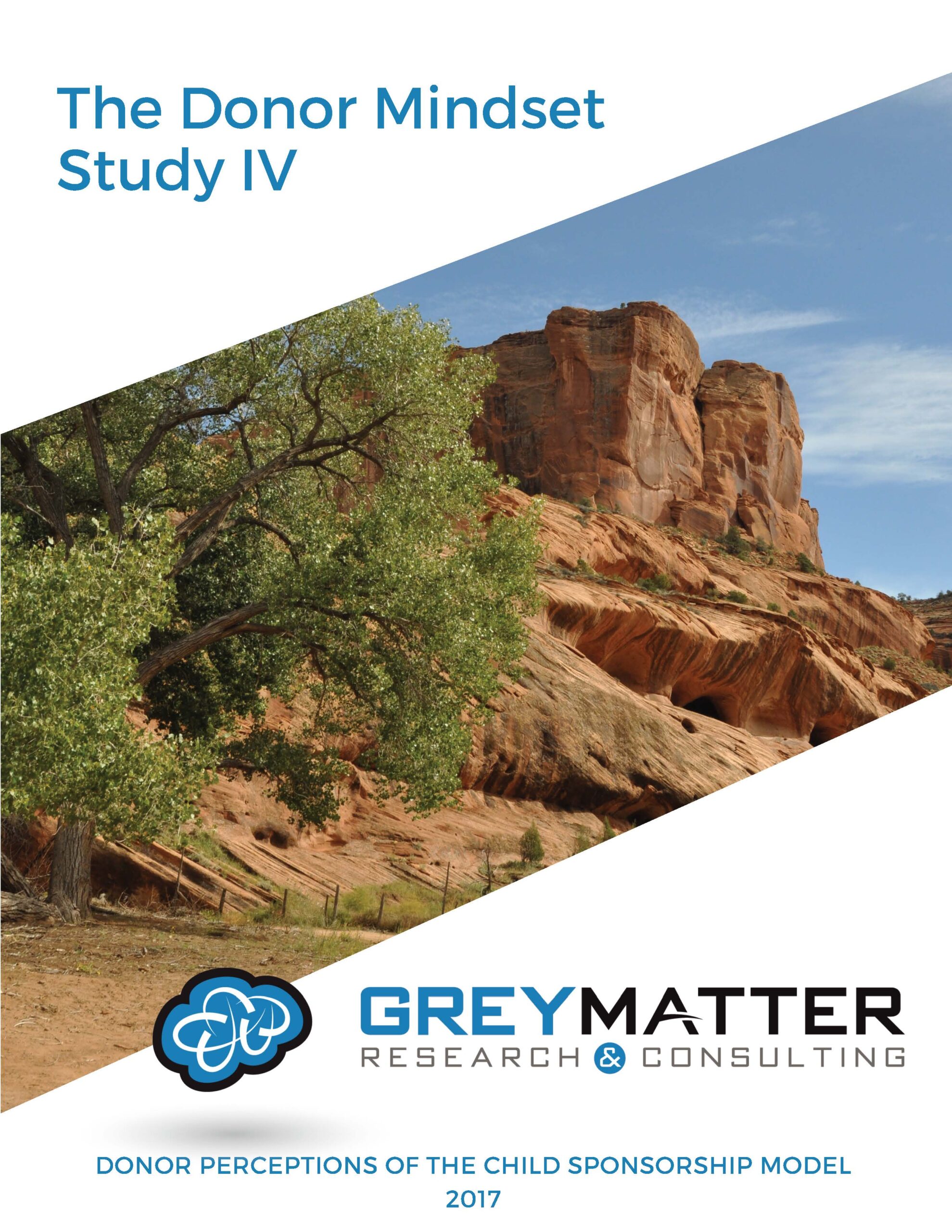
How donors perceive child sponsorship is a mixed bag. Most feel it’s credible and legitimate, but also have concerns and don’t fully grasp how it works.
Aware but Not Familiar
A national study of 1,000 American charitable donors shows 87% are aware of child sponsorship. However, only 24% feel very familiar with it.
Child sponsorship is a primary means of fundraising used by large organizations such as World Vision, Save the Children, Compassion International, and Children International. The model is also employed by scores of other organizations large and small, ranging from The Salvation Army to Nazarene Compassionate Ministries.
The Donor Mindset Study, conducted by Grey Matter Research asked donors their perceptions of sponsorship. What emerges is a mixed bag of truth and fiction; approval and concern.
Legitimate and Credible
Overall, 74% of donors believe child sponsorship is a legitimate, credible way of helping children in need. But only 26% believe this strongly. Among people who are currently sponsoring a child, 98% believe it is legitimate and credible. Only 68% feel strongly about this – the other 30% harbor at least some doubts.
Genuine Contact with the Child
Most donors believe sponsors truly do get to have real, one-to-one contact with their sponsored child. Twenty-two percent believe this strongly; 42% somewhat. Ninety-five percent of current sponsors believe this.
The major child sponsorship organizations all offer a mechanism for donors to be able to visit their sponsored child. Very few donors will actually take advantage of this. But it appears to serve as a sort of warranty for many donors. Eighty-one percent say the ability to visit their sponsored child makes sponsorship more legitimate and believable.
Concerns and Misperceptions
These findings paint a picture of a fundraising model most donors believe is credible and genuine. However, that picture would be incomplete without addressing concerns and misperceptions many donors hold about sponsorship.
For one thing, 64% of all donors say they have heard of problems or scandals related to sponsorship charities that make them question how genuine sponsorship is. This includes 24% who feel strongly about this. Even six out of ten current sponsors have heard of these concerns.
For another thing, although three out of four donors find sponsorship to be legitimate and credible, a majority (55%) still see it as mostly a gimmick to get support. Again, only 21% feel strongly about this, with 34% somewhat believing this.
There is also significant confusion about how sponsorship actually works. Three out of four donors believe despite what sponsorship organizations claim, the money given doesn’t really help one child. Instead, they feel it is used for the charity’s overall programs. The major sponsorship organizations all pool sponsor funds to assist a larger project or community, which helps the individual sponsored child. The challenge is, there are varying levels of transparency about this. Some organizations openly promote this, while others barely mention it. This appears to be causing confusion for many donors.
Seventy-seven percent of American donors wrongly believe sponsored children have more than one sponsor. (The major sponsorship organizations all state each child has one sponsor). Even most current sponsors mistakenly believe this.
Taking the Next Step
Ron Sellers is president of Grey Matter Research. He notes this research portrays a charitable sector which needs to go beyond high levels of awareness and do more to build familiarity and comfort. “Most donors are aware of sponsorship and are generally positive toward it, but there is not a lot of real familiarity with how it works,” Sellers explained. “Most donors don’t have strongly positive or negative perceptions about sponsorship. That shows a lot of donors aren’t entirely sure of their position on sponsorship.”
Sellers pointed out there is significant interest in sponsorship, but also some obstacles. “We learned that among donors who have never experienced child sponsorship, one-third have considered sponsoring a child. That’s huge. Yet something is holding them back from taking that step. The interest is there, but so are doubts or concerns. It would be wise for sponsorship organizations to explore deeply what these obstacles are and how they can more effectively overcome them.”
The full report examines these donors perceptions more in-depth, especially according to donors’ personal experience with sponsorship. Please e-mail ron@greymatterresearch.com for a free copy of the full report.
About Grey Matter Research
Grey Matter Research has extensive experience with research related to non-profit organizations, with numerous donor-supported organizations as clients. Grey Matter works directly with donor-supported organizations and in partnership with the fundraising, branding, and marketing services agencies that support them.
